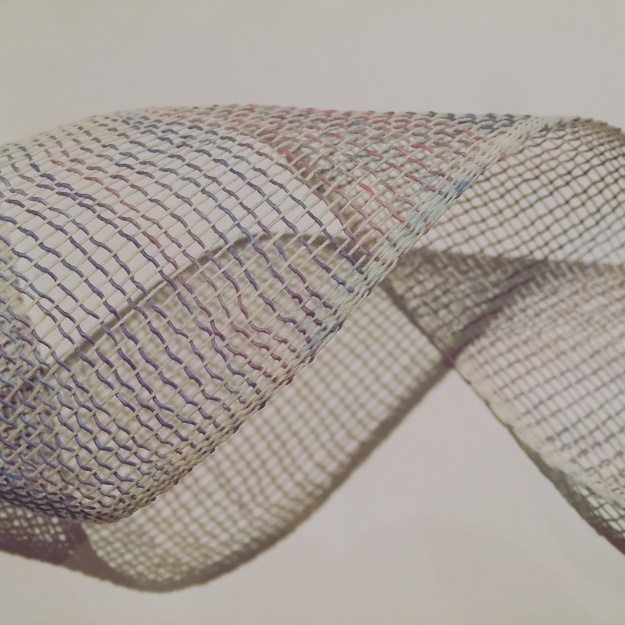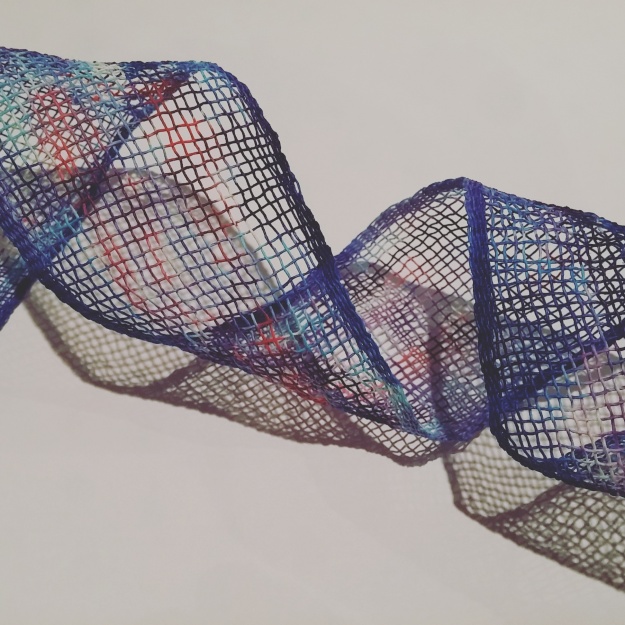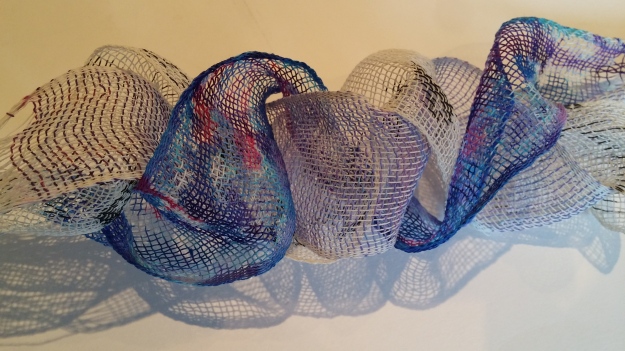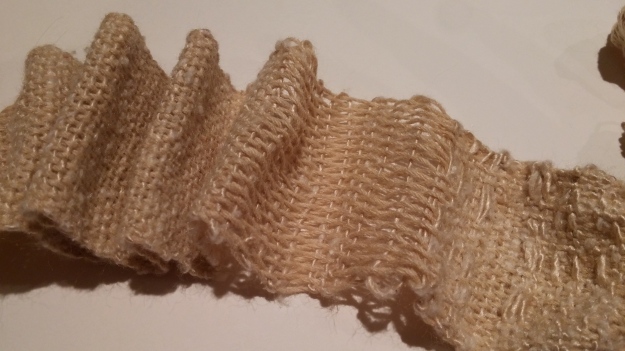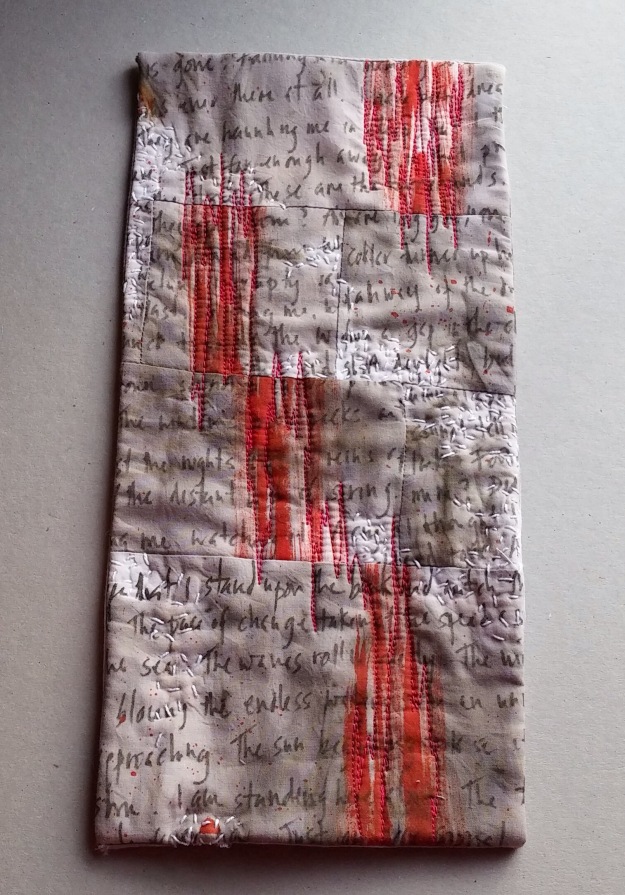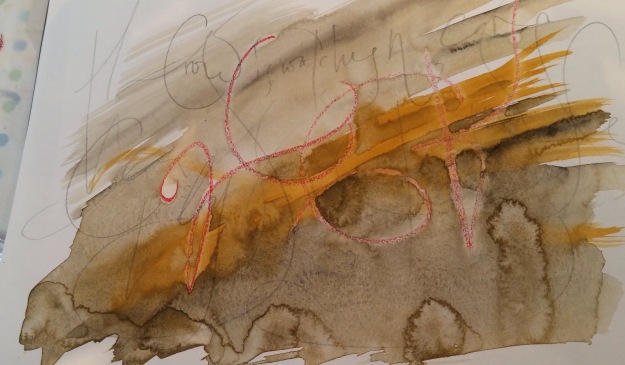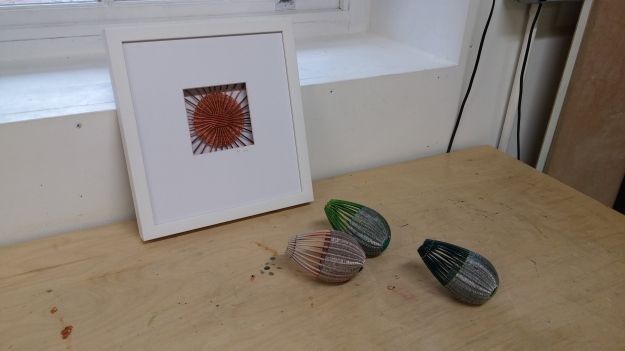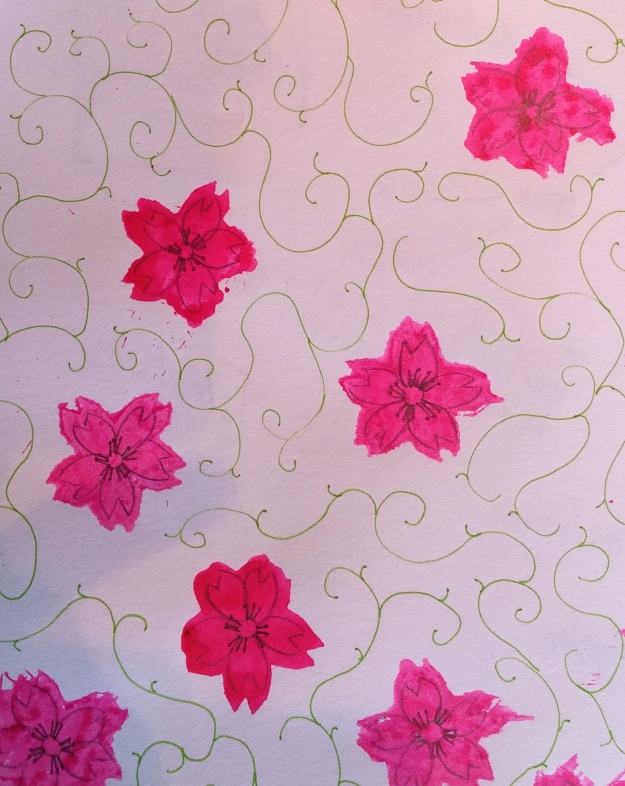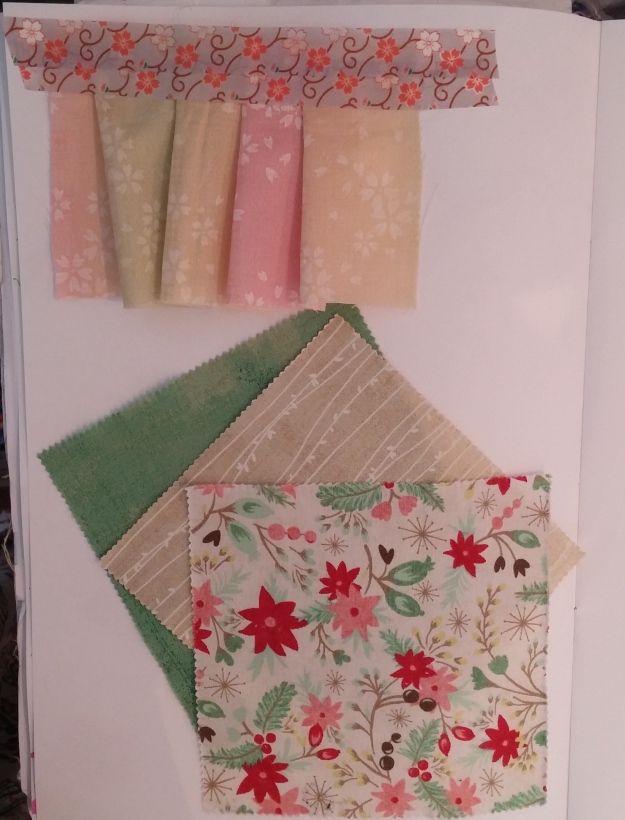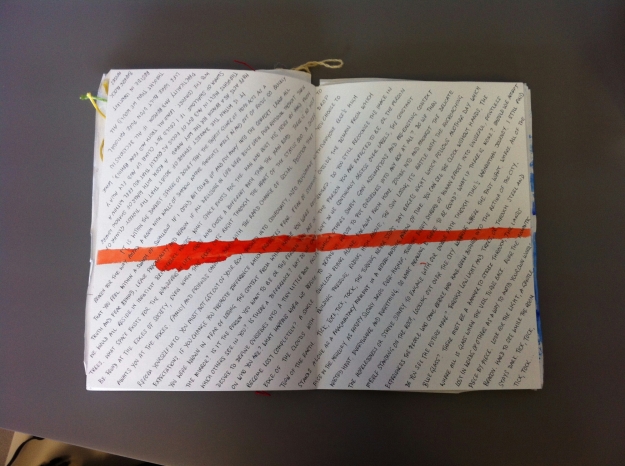In the endless cycle of thinking and making, my making work continues to focus on looking at the haunted place as inspiration for a bunch of competition quilts I have on the go. I made the decision to try to make these as resolved pieces based on my MA project proposal, partly to further my research but also to try to reconnect with my practice after going down a dark rabbit hole over the last two terms.
As I alluded to a couple of times in previous posts, I have been looking at mark making with found materials from a particular place: trying to embody the genius loci within my work. So far, I have been experimenting with different processes for natural dyeing of plain unbleached calico. First was using materials found within half a mile of my front door: tree bark, dried leaves, willow ash, flower petals, steel wires. Here are a couple of examples:


and the results of the psychogeographic ramble I had the other day:
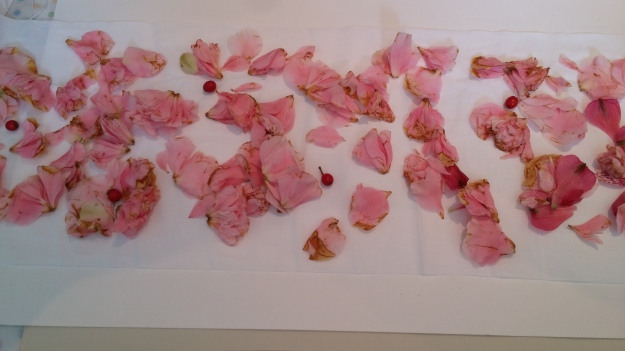
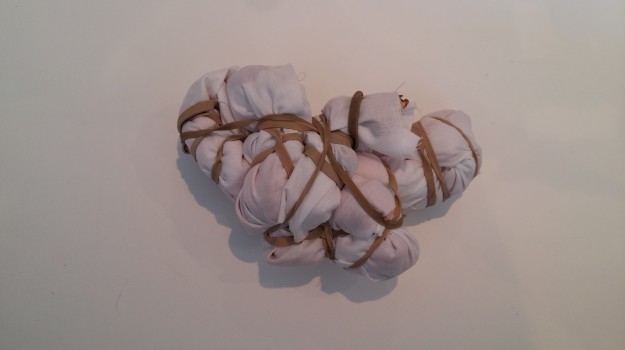

so! What next to do with all of these lovely bits of fabric?
Well, I have been considering what I now think of my research question – and how my interpretation of place and placelessness has changed so far. I have been taken by the idea of the local and how this relates to place. I believe that each place has multiple identities existing in the same space simultaneously, which each person (with their own multiple identities contained within their sense of self) interacts with differently based upon how they connect with the local knowledge. That local knowledge may be about memories of histories of the place itself, or it may be a completely distant narrative overlaid onto a new place, allowing you to connect your own ‘locality’ with a new alien place. This is how you can feel at home in a place you have never been. Lucy Lippard [1] offers the following:
“Inherent in the local is the concept of place – a potation of land/town/cityscape seen from the inside, the resonance of a specific location that is known and familiar…Place is the latitudinal and longitudinal within a person’s life. It is temporal and spatial, personal and political. A layered location replete with human histories and memories, place has a width as well as depth. It is about connections, what surrounds it, what formed it, what happened there and what will happen there.”
Placelessness, then could be said to an inability to feel connected. Your locality, your local knowledge as it were, so alienated from the dominant narrative that it becomes meaningless. In his introductory book on place, Tim Cresswell [2] quotes the geographer Edward Relph who uses the language of authenticity to describe this connection with place.
“..”to be inside a place is to belong to it and identify with it, and the more profoundly inside you are the stronger is the identity with the place” (Relph 1976). At the opposite extreme, existential outsiderness involves the alienation from place which is the antithesis of the unreflective sense of belonging that comes from being an existential insider…..in the modern world, Relph argues that we are surrounded by a general condition of creeping placelessness marked by an inability to have authentic relationships to place, because the new placelessness does not allow people to become existential insiders….”placelessness that is a weakening of the identity of places to the point where that not only look alike and feel alike and offer the same bland possibilities for experience.”
On this subject of authenticity, Creswell goes on later in the book to quote geographer David Harvey:
“The issue of authenticity (rootedness) of the experience of place (and nature of place) is for example a difficult one. To begin with…the problem of authenticity is itself peculiarly modern. Only as modern industrialisation separates us from the press of production and we encounter the environment as a finished commodity does it emerge….The effort to evoke a sense of place and of the past is now often deliberate and conscious.”
This brought me back to question more deeply the work of Lucy Orta with the Genius Loci / spirits of place that were created to enshrine the story of a river, through sculptural form. What can be said of authenticity when deliberately enshrining the past through such an intervention? I have never really liked the direct personification of spirits (whether you think go spirits as an essence, a ghost or whatever else) as that’s not how I personally choose to interpret them. Nor do I think I want to make work specifically for a precise location. When I started this proposal I had wanted to create site-specific work and initially understood it as being quite literal – you take a place and make some work inspired by that place and for that place. I now am looking towards a more conceptual view of site-specific: work speaking of a place, using a connection from that place – but across the spectrum of spatial and temporal, literal and virtual. I will need to understand more on how this aligns with current thinking on site specific art.
Anyway, I think I digressed a little – back to what I am making. So the plan, is to work with my own understanding of the Genuis Loci and a sense of place, which I would capture as: We feel the essence of place as an echo of the earth, and we become the medium of the storytelling.
My first resolved piece is now done and waiting to be framed: Genius Loci I (Star field); here is a sneaky preview of the detail.
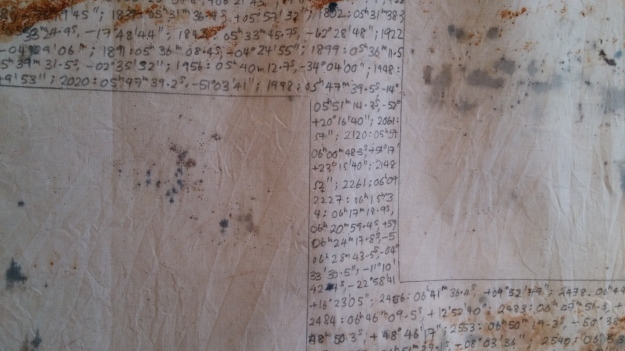
[1] Lure of the Local, Lucy Lippard (1997)
[2] Place, a short introduction, Tim Crewell (2004)

